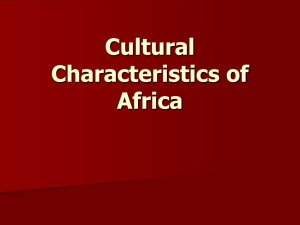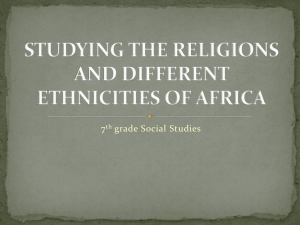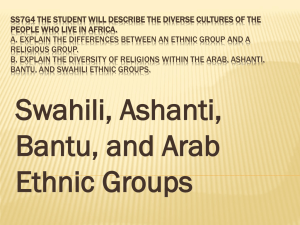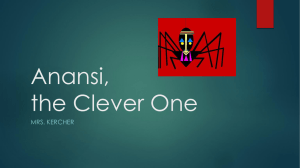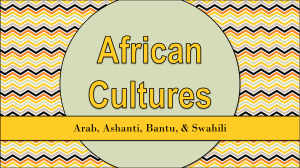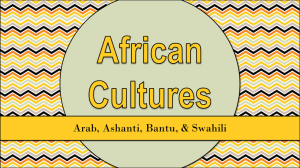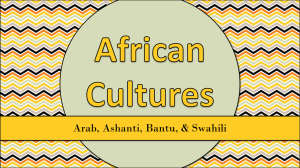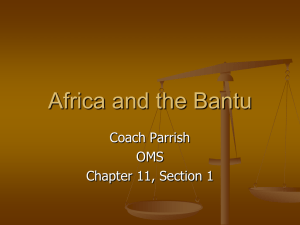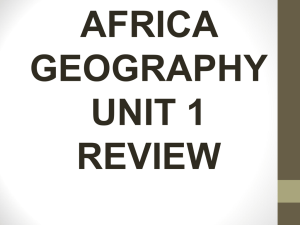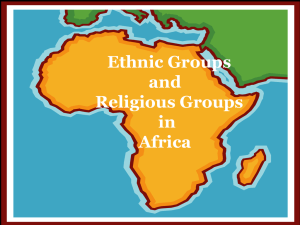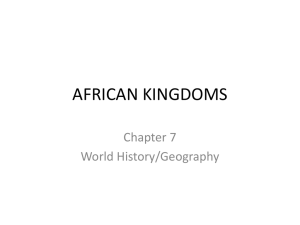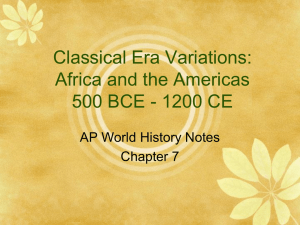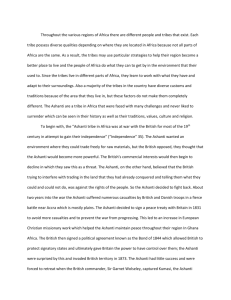Diverse Cultures of Africa - McCullers` World Explorers
advertisement
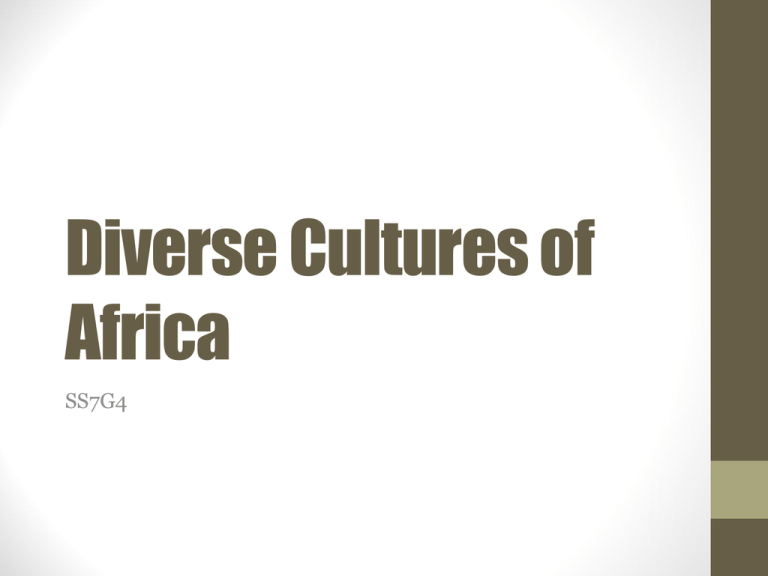
Diverse Cultures of Africa SS7G4 SS7G4 • The student will describe the diverse cultures of the people who live in Africa. a. Explain the differences between an ethnic group and a religious group b. Explain the diversity of religions within Arab, Ashanti, Bantu, and Swahili ethnic groups. c. Evaluate how the literacy rate affects the standard of living Definitions • Ethnic group: share many common characteristics, such as language, physical features, customs, and traditions. • Religious group: share a common belief system, but are not necessarily composed of a single ethnic group Major Ethnic Groups of Africa • • • • Arab Ashanti Bantu Swahili Arab People • Originating from the Arabian Desert • Speak the Arabic language • Found mostly in North Africa, Saudi Arabia, Iraq, and Iran. • Predominantly Muslim Ashanti People • Matrilineal society (descent traced through female) • Found mostly in Ghana • Tribal identity is important • Most modern Ashanti are Catholic or Protestant Christian Bantu People • Share common language families (over 400 Bantu languages) • Over 60 million people • Most of sub-Saharan Africa’s black Africans are considered “Bantu” Swahili People • • • • East coastal Africa Mix of Arab and Bantu cultures “Swahili” means coastal dwellers in Arabic Most are Muslim Religions in Africa • In Africa, there are 3 major religions: • Traditional beliefs: may include worship of ancestors, spirits, gods, animals, land, inanimate objects, and/or natural phenomena • Christianity: the belief in Jesus Christ as the son of one God • Islam: the belief in Muhammad the prophet of Allah, the one God • In Africa, some groups combine Christianity and traditional beliefs. Diversity of Religion • Arabs are predominantly Muslim, however some Arabs are Christian • Ashanti and Bantu predominantly practice traditional religions • Ashanti mix spiritual and supernatural powers • Bantu believe in power of ancestors in everyday life • Swahili is predominantly Muslim, but some mix Islam with traditional elements Literacy Rate & Standard of Living • Literacy Rate: The % of people of a certain age that can read and write proficiently. • Standard of Living: Quality and Quantity of goods and services available to people. Usually measured by real income and poverty rates. Why do you think the two would be linked? Ticket-out-the-Door 1) Which person is a member of a religious group? A) Nemal is a Kurd B) Mustafa is a Muslim C) Kimba is an Ashanti D) Lakesha is a Nigerian 2) African religious beliefs include traditional religious beliefs that came before the introduction of Christianity and Islam to the continent. Which of these statements describes traditional African religious beliefs? A) Belief in Krishna B) Belief their king is a god C) Belief in the importance of a divine savior D) Belief in the influence of ancestors on daily life 3) South Africa has a literacy rate of 86% and a per capita GDP of $10000. Egypt has a per capita GDP of $3900. What can we guess about Egypt’s Literacy Rate? A) Egypt’s literacy rate is > South Africa’s B) Egypt’s literacy rate is = South Africa’s C) Egypt’s literacy rate is < South Africa’s
